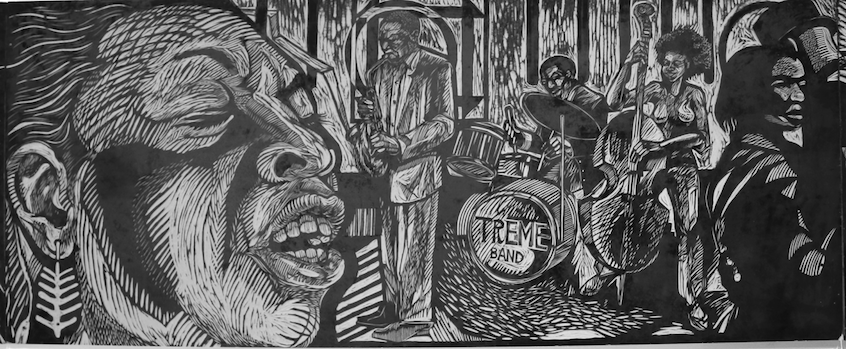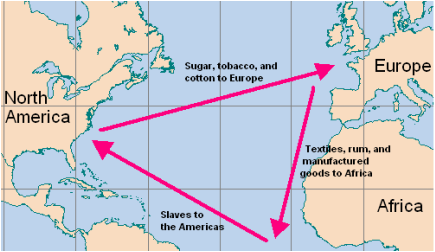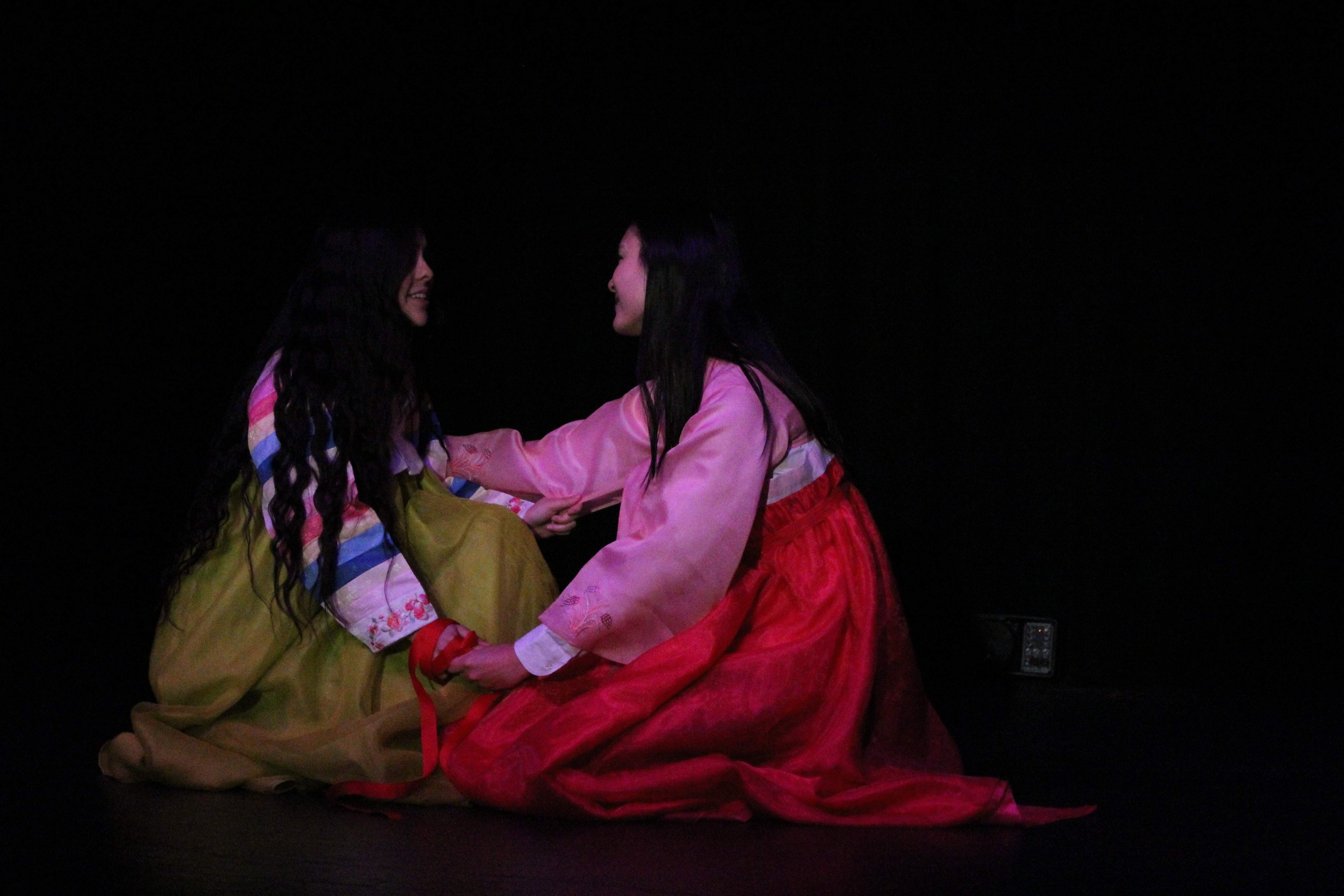As I meditated on what I’ve gained in this course thus far and what I could possibly write about in my blog posts, many thoughts emerged. I could begin by delving in what I consider the most significant change I’ve noticed which is the way I now interact with art, information, knowledge, technology and sustainability not only as an academic but as a human, artist and member of society. Before this course, all these things seemed more conceptual to me and although I understood its pressing inhibatance in modernity and in my own life, I had never really taken the time to speculate what this rigorous immersing of engagement between all these elements really meant for me or for the world. As a self proclaimed artist and art enthusiast, I appreciated all the open discussions in the overlapping similarity of artists, such as Francisco Goya’s The Third of May 1808 and Steve Prince’s own art and their interaction to social issues and sustainability. This class offered by the tools and environment I needed to step back in order to truly speculate on the subject and reflect on how I’d like to use what I’ve learned in this course and apply it outside of my own major and into all different areas of my life. Through the courses constructed commentary, short witty anecdotes, and insights, I was able to see how all these areas of disciplines overlap and interact. As I take a step back now and begin reflecting on what I’d like to write about not only in my blog posts but in my self reflective essay, I have come to recognize that I have more to talk about than what I had originally been led to believe, the hardest part is just starting. Continue reading “The Hardest Part is to Start”
The Fern
Though Dr. Yang has moved on to discussing ecology in General Biology II, my favorite unit would have to be the one we began with, wherein I learned about plant species diversity. I (re-)learned that all plants can be classified into four groups: Non-vascular plants, seedless vascular plants, gymnosperms, and angiosperms. One such member of the seedless vascular plants is the fern, an extremely durable, yet dainty plant that is heavily featured within Steve Prince’s “Song for Aya,” as Prince himself pointed out during his “Kitchen Talk” lecture held at SUNY Geneseo.
The fern is most present in the second piece of “Communal Resurrection: Song for Aya” in the earring of the woman who takes the foreground of that section of the piece. Prince, in his talk, explained that the fern motif is one that is carried throughout the entire piece, and demonstrated such by walking over to his projected image and tracing out the leaf patterns with his hands. Once Prince had pointed out the fern’s ubiquitous presence, I could not unsee it. It was clearly present in the singing woman’s earring, but I began to notice it in other places, as well.

Subjective Thinking
Subjective: based on or influenced by personal feelings, tastes, or opinions.
Throughout this course, I feel like I have gained more knowledge about racial and wealth-based issues by using literature and art. I have also through this class practiced not being subjective when thinking and talking about these issues.
A Post-High School Review of Triangular Trade

During her lecture, Dr. Adams showed us an image very similar to the one pictured above. It depicts what is commonly known as the Transatlantic Slave Trade. In class we discussed this image and I noticed several issues with the image that I, frankly, never really thought about for the majority of my academic career. For example, this image in particular shows a simple linear, one-sided system of trade with only three points of exchange (and it would have to struggle to be further from the reality). This blog post is by no means an expose on the public education system, but I will say that it did, for me, allow for a great degree of formal distance from the subjects my teachers were required to teach me about. That is, a few blog posts ago I wrote about apathy being too prevalent in society; well, I was definitely ignorantly apathetic. Additionally, none of my primary or secondary education teachers ever taught me so much about the American slave trade in thirteen years as Dr. Adams did in approximately one hour (nor did they make me care as much).
Continue reading “A Post-High School Review of Triangular Trade”
GENE『S』EO: The Myriad of Navigating Geneseo’s Binaries [6]
I watch a dim blue light hit the Union Ballroom stage. As the blue light shapes the darkness, Suji Lee runs on to the stage, wearing a green hanbok (조선옷); her face red. The girl runs over to the shaman, shrouded in a black cloak.
The shaman looked away as Suji ran over to her. Suji approaches her partially out of breath.
Suji says, “Please Wul Hwa you can’t do this to me! None of you can do this to me! That was my true fate and becoming you isn’t! Please, I just want to be happy!”
Wul Hwa smiles in response and turns to her. She says sarcastically, “Suji, what a nice surprise.” Just as she finishes that statement she turns away, beginning to exit the stage. Wul Hwa had nothing more to say to the doomed girl.
Suji cries out, “No please, don’t go!” Wul Hwa turns around one last time and looks at Suji. Then exits the stage into the backstage corridor. As the shaman exits, Suji falls to her knees and cries.
Another girl, Hebin, walks on to the stage, a red ribbon in her hand. The red thread of fate…
Hebin approaches; she was wearing a pink hanbok. Hebin reaches Suji Lee and starts tying the ribbon around her arm. Suji stops crying and goes to grab the red ribbon, but Hebin does not let go. Suji looks over Hebin and then lifts up her head.
“Hebin! It’s you! It’s always been you!” Suji exclaims. Hebin and Suji meet eye-to-eye before embracing each other in a loving hug.
The lights dim into darkness and the crowd erupts into cheers and screaming. Me and the others in the back smile and hold back laughter as the crowd roared in enjoyment.

Continue reading “GENE『S』EO: The Myriad of Navigating Geneseo’s Binaries [6]”
Philosophy Pt. 2
Aforementioned, many minority groups face a cyclical nature of destitution. With this reappearing lack of progress, how is it measured? How do we know when we have achieved what we call “success”?An issue explored within class was how we identified the effects of progress. David Levy, our guest speaker on Philosophy, explained the Zeno Theory in reference to that identification. Continue reading “Philosophy Pt. 2”
Corporate Social Responsibility (and Cherry Garcia)
I am skeptical of brands that promote social awareness on social media. Most of the time, it’s a superficial marketing strategy aimed at millennials and Generation Z. In my mind, these large, faceless corporations are conditioning consumers to associate their product with social justice.
Continue reading “Corporate Social Responsibility (and Cherry Garcia)”
Disarming the Audience
I said that my next post would continue the epic saga of homeless people in Victor LaValle’s Big Machine, but I think that post will percolate for a little while more while I write out this post. Percolate, or to bubble and warm up, is an SAT word that is a very useful word to know. The SAT, however, was a test created by upper-middle class white men to admit people with similar backgrounds into college. I will be talking about some of those examples in this next post.
In Imperceptible Mutabilities, Susan-Lori Parks uses a character called “The Naturalist” to serve as a narrator for the confusing plot. Instead of blending in, the character, with his white skin and holier-than-thou attitude, stands out amongst “them roaches” (Parks, 29) that he has been studying. This character archetype is incredibly familiar to many of us, and in my group, we discussed characters like…
To Seek Discomfort
The state of uncomfortability is something most people are afraid of, it often  restrains their actions and subsequently limits them from all the possibilities they may take. There are many paths and decisions that people can make; if half of those decisions are cut off prematurely because of a fear of discomfort, we would lose half the opportunities we have. This fear of judgement and failure we create is simply a protective barrier keeping us from the opportunity to grow—I don’t discredit fear, as it is a natural feeling, but I believe taking power over our fear of an uncomfortable situation can be empowering. In order to take full advantage of our options, we must seek discomfort.
restrains their actions and subsequently limits them from all the possibilities they may take. There are many paths and decisions that people can make; if half of those decisions are cut off prematurely because of a fear of discomfort, we would lose half the opportunities we have. This fear of judgement and failure we create is simply a protective barrier keeping us from the opportunity to grow—I don’t discredit fear, as it is a natural feeling, but I believe taking power over our fear of an uncomfortable situation can be empowering. In order to take full advantage of our options, we must seek discomfort.
Continue reading “To Seek Discomfort”
Did Ricky’s Faith Fail Him?
For this post, I’d like to look at “faith” and “trust” as two separate concepts. I have used them interchangeably in class, and even in previous blog posts, though they do not always have identical meanings. We have talked a lot about trust in Big Machine, specifically Ricky Rice’s trust in others and his trust in institutions. That is something I would like to get back to. Right now, I would like to look at Ricky’s faith in religion. His faith in the Washerwomen.
